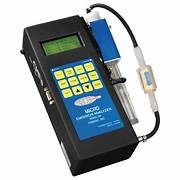Understanding EPA Compliance with Gas Emission Analyzers

In today’s industrial world, understanding EPA compliance with gas emission analyzers has become critical for companies that want to survive and grow. The U.S. Environmental Protection Agency (EPA) has put strict emission guidelines in place to protect air quality and public health. Industries ranging from power plants and refineries to cement factories and waste-to-energy units are all under EPA’s radar. In fact, EPA enforcement actions in 2023 alone led to over $4.5 billion in compliance-related costs for companies across the U.S. This shows how non-compliance is not only a legal risk but also a financial one. The good news? Gas emission analyzers have become the most reliable tool to help businesses meet EPA standards without fear of penalties. EPA compliance isn’t just about following the law—it’s about creating a safer and more sustainable environment. Harmful gases like carbon monoxide (CO), sulfur dioxide (SO₂), nitrogen oxides (NOx), volatile organic compounds (VOCs), and greenhouse gases (GHGs) directly affect air quality, climate, and public health. Heavy Penalties and Legal Risks – Non-compliance can cost millions in fines and shutdown orders. Brand Reputation – Customers, investors, and the public expect businesses to be responsible. Operational Efficiency – Monitoring emissions uncovers inefficiencies that increase fuel usage. Future-Proofing – Adopting compliance tools early helps industries stay ahead of tighter future regulations. Think of a gas emission analyzer as your company’s compliance detective. These instruments continuously measure gases emitted from stacks, boilers, furnaces, and engines. By collecting real-time data, they allow businesses to detect, track, and report emissions with accuracy. NDIR (Non-Dispersive Infrared) – Ideal for CO₂ and CO measurement. Electrochemical Sensors – Used for gases like NO, SO₂, and O₂. FID (Flame Ionization Detectors) – Essential for hydrocarbons and VOCs. Laser-Based Detectors – Provide high precision for critical gases. The data collected is automatically formatted in line with EPA’s Continuous Emission Monitoring Systems (CEMS), making compliance reporting much easier. The EPA enforces multiple programs such as the Clean Air Act (CAA), National Ambient Air Quality Standards (NAAQS), New Source Performance Standards (NSPS), and Hazardous Air Pollutants (HAPs). Each requires accurate monitoring and reporting of emissions. Continuous Monitoring – Real-time tracking of SO₂, NOx, and CO₂ ensures nothing goes unnoticed. Automated Reporting – Data is formatted to match EPA’s Electronic Reporting Tool (ERT). Calibration & Certification – Many analyzers come with auto-calibration to guarantee accuracy during audits. Emission Control Strategies – Analyzer data helps optimize scrubbers, filters, and catalytic converters. While gas emission analyzers are essential for meeting EPA rules, their advantages go much further. Operational Optimization – Detects oxygen imbalances and incomplete combustion. Cost Savings – Identifies fuel inefficiencies, reducing operating expenses. Worker Safety – Detects toxic gases early to prevent workplace hazards. Sustainability – Provides reliable data for ESG (Environmental, Social, Governance) reporting. According to MarketsandMarkets, the global emission monitoring systems market is projected to reach $4.4 billion by 2027, largely driven by EPA and international compliance requirements. Take the example of a coal-fired power plant in the U.S. Facing stricter EPA guidelines, the plant integrated multi-gas emission analyzers to track SO₂, CO₂, and NOx in real time. Within a year, the plant reduced its emission violations by 60%, avoided costly fines, and saved nearly $1 million in fuel efficiency improvements. This is proof that emission analyzers are not just a compliance tool but also a profitability driver. When investing in a gas analyzer, industries should consider: EPA-Certified Technology – Ensures the device meets federal standards. Multi-Gas Detection – Ability to monitor multiple gases simultaneously. High Accuracy and Sensitivity – Prevents false alarms and missed emissions. Data Connectivity – Cloud integration for remote monitoring and audits. Low Maintenance – Auto-calibration reduces downtime and costs. Power Generation – Coal, oil, and natural gas plants. Petrochemicals & Refineries – Monitoring hydrocarbons, VOCs, and SO₂. Cement & Steel Manufacturing – High CO₂ and particulate matter control. Waste-to-Energy Facilities – Compliance with HAPs and GHG standards. Pulp & Paper Industry – Monitoring NOx and SO₂ emissions. The future of gas emission compliance is heading toward smarter solutions. With AI, IoT, and cloud-based monitoring, industries can now track emissions with predictive analytics. Imagine an analyzer not just reporting a spike in NOx but predicting when it might happen, allowing proactive action before a violation occurs. As sustainability becomes a global priority, advanced analyzers will be central to meeting both EPA standards and international agreements like the Paris Climate Accord. Understanding EPA compliance with gas emission analyzers is no longer optional—it is essential. From avoiding billion-dollar fines to building trust with stakeholders, emission analyzers are helping industries move toward cleaner, safer, and more efficient operations. Whether you’re in power generation, refining, cement, or waste management, investing in the right analyzer means you’re not just staying compliant—you are securing your company’s future. Understanding EPA Compliance with Gas Emission Analyzers
Why EPA Compliance Matters
Why Businesses Care About Compliance
What Are Gas Emission Analyzers?
Common Technologies Used in Analyzers
EPA Compliance and the Role of Gas Analyzers
How Gas Analyzers Support Compliance
Benefits Beyond Compliance
Case Example: Power Plants and Emission Control
Key Features to Look for in a Gas Emission Analyzer
Industries That Rely on Gas Emission Analyzers
The Future of Emission Monitoring
Final Thoughts




